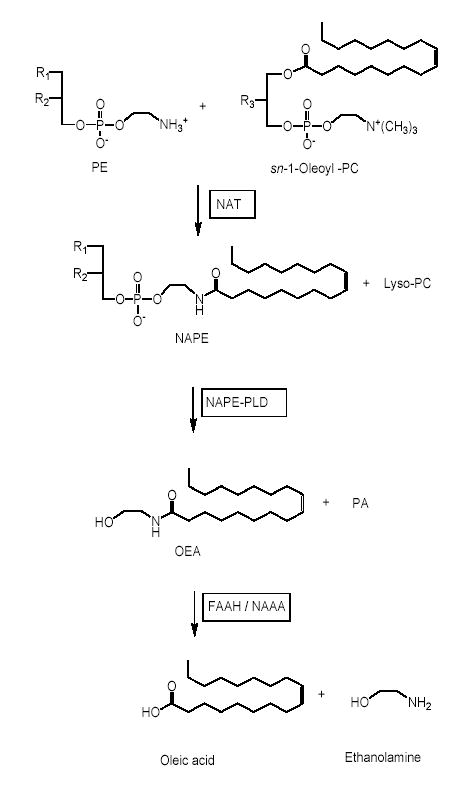GPR119 is a G protein-coupled receptor expressed predominantly in the pancreas (beta-cells) and gastrointestinal tract (enteroendocrine cells) in humans. De-orphanization of GPR119 has revealed two classes of possible endogenous ligands, viz., phospholipids and fatty acid amides. Of these, oleoylethanolamide (OEA) is one of the most active ligands tested so far. This fatty acid ethanolamide is of particular interest because of its known effects of reducing food intake and body weight gain when administered to rodents. Agonists at the GPR119 receptor cause an increase in intracellular cAMP levels via G(alphas) coupling to adenylate cyclase. In vitro studies have indicated a role for GPR119 in the modulation of insulin release by pancreatic beta-cells and of GLP-1 secretion by gut enteroendocrine cells. The effects of GPR119 agonists in animal models of diabetes and obesity are reviewed, and the potential value of such compounds in future therapies for these conditions is discussed.
Overton HA, Fyfe MC, Reynet C. Br J Pharmacol. 2008;153 Suppl 1:S76-81.
Oleoylethanolamide (OEA) is a lipid mediator that inhibits food intake by activating the nuclear receptor peroxisome proliferator-activated receptor- ? (PPAR-?). In the rodent small intestine, OEA levels decrease during food deprivation and increase upon refeeding, suggesting that endogenous OEA may participate in the regulation of satiety. Here we show that feeding stimulates OEA mobilization in the mucosal layer of rat duodenum and jejunum, but not in the serosal layer from the same intestinal segments, in other sections of the gastrointestinal tract (stomach, ileum, colon), or in a broad series of internal organs and tissues (e.g., liver, brain, heart, plasma). Feeding also increases the levels of other unsaturated fatty-acid ethanolamides (FAEs) (e.g., linoleoylethanolamide) without affecting those of saturated FAEs (e.g., palmitoylethanolamide). Feeding-induced OEA mobilization is accompanied by enhanced accumulation of OEA-generating N-acyl phosphatidylethanolamines (NAPEs), increased activity and expression of the OEA-synthesizing enzyme NAPE-phospholipase D (NAPE-PLD), and decreased activity and expression of the OEA-degrading enzyme fatty-acid amide hydrolase (FAAH). Immunostaining studies revealed that NAPE-PLD and FAAH are expressed in intestinal enterocytes and lamina propria cells. Collectively, these results indicate that nutrient availability controls OEA mobilization in the mucosa of the proximal intestine through a concerted regulation of OEA biosynthesis and degradation. F
Fu J, Astarita G, Gaetani S, et al. J Biol Chem. 2007;282(2):1518-28.
The GPR119 was recently shown to be activated by oleoylethanolamide (OEA), a naturally occurring bioactive lipid with hypophagic and anti-obesity effects. In this study, we have cloned and characterized its murine counterpart, Gpr119. The full-length cDNA contained an open reading frame of 1008 bp encoding a 335-amino acid protein. The genomic organization of Gpr119 was unique, having a 3'-untranslated second exon that was also involved in an alternative splicing event. Gene expression analyses confirmed its specific expressions in pancreatic islets and two endocrine cell-lines, MIN6 and αTC1. Immunohistochemistry and double-immunofluorescence studies using a specific antibody revealed the predominant Gpr119 localization in pancreatic polypeptide (PP)-cells of islets. No definitive evidence of Gpr119-immunoreactivity in adult β- or α-cells was obtained. The Gpr119 mRNA levels were elevated in islets of obese hyperglycemic db/db mice as compared to control islets, suggesting a possible involvement of this receptor in the development of obesity and diabetes.Sakamoto Y, Inoue H, Kawakami S, et al. Biochem Biophys Res Commun. 2006;351(2):474-80.

| Catalog# | Product | Standard Size | Price |
|---|---|---|---|
| 032-51 | OEA (Oleoylethanolamide) | 1 mg | $63 |
Social Network Confirmation